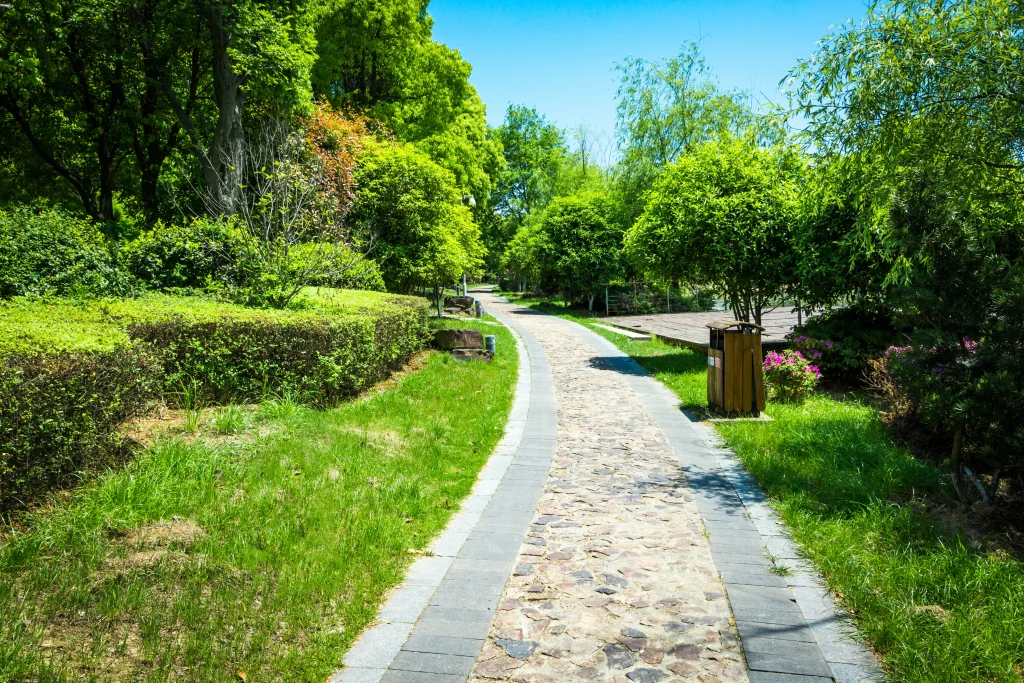Denver’s semi-arid climate presents unique challenges for maintaining traditional lawns. Xeriscaping offers a practical solution for homeowners seeking water-wise, cost-effective, and environmentally sound landscaping options.
At Mile High Lifescape, we’ve transformed countless Denver yards into stunning xeriscapes that conserve water while enhancing property value. The following 30 xeriscape ideas will help you reimagine your outdoor space with sustainable practices that work specifically in Colorado’s climate.
Front Yard Xeriscape Ideas
#1: Native Grass Lawn Replacement
Replace water-hungry turf with low-maintenance Blue Grama or Buffalo Grass. These native grasses thrive in Colorado’s climate, providing green coverage during spring and summer, then transitioning to golden hues in fall. This approach works best in areas with full sun exposure and reduces water consumption by up to 60% compared to Kentucky Bluegrass (see more about what is xeriscape).
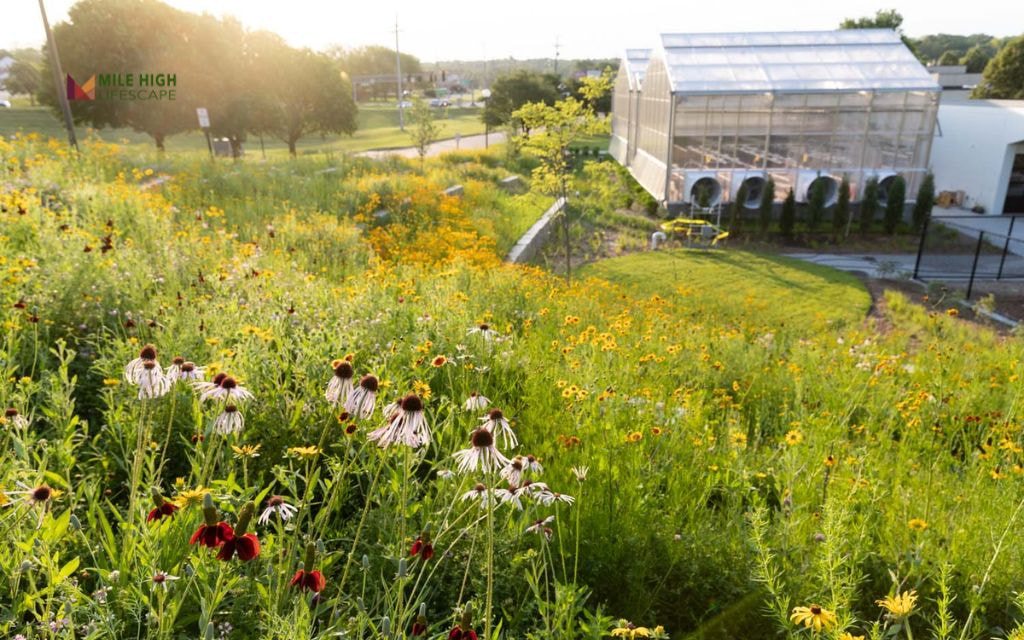
#2: Flagstone Path with Groundcover Integration
Install a natural flagstone pathway set into drought-resistant creeping groundcovers like Thyme or Ice Plant. These plants produce vibrant purple and pink blooms while filling spaces between stones. Position boulders along edges to create visual anchors and define the path. This design combines functionality with water conservation.
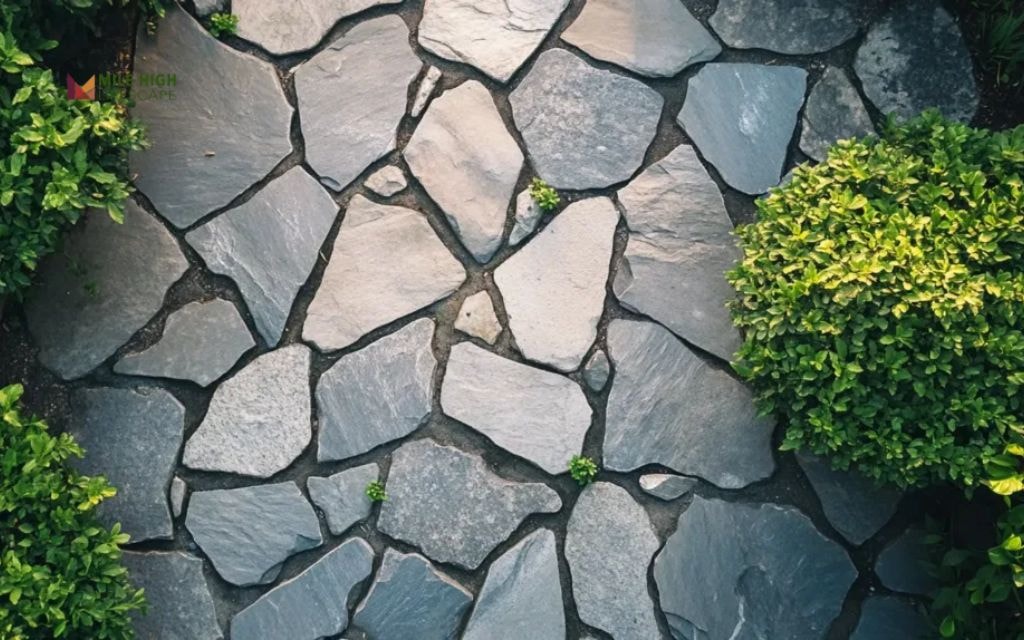
#3: Perennial Pollinator Border for Driveways
Create a striking edge along your driveway using xeriscape plants for Colorado such as Yarrow, Blanket Flower, and Penstemon. These plants deliver rotating seasonal color and attract beneficial pollinators like bees and butterflies. The deep root systems require minimal watering once established.
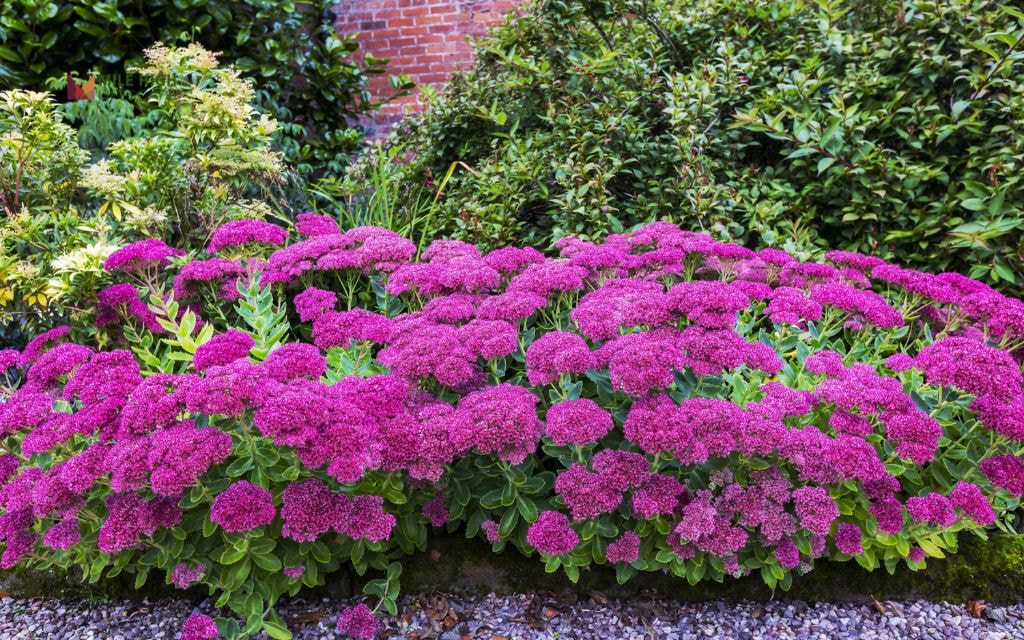
#4: Dry Creek Bed for Drainage Solutions
Construct a decorative rock channel with natural curves to direct water flow. Frame with Russian Sage and Switchgrass for contrast and stability. This feature solves drainage issues while creating visual interest, particularly effective for Denver properties with slopes or runoff concerns.
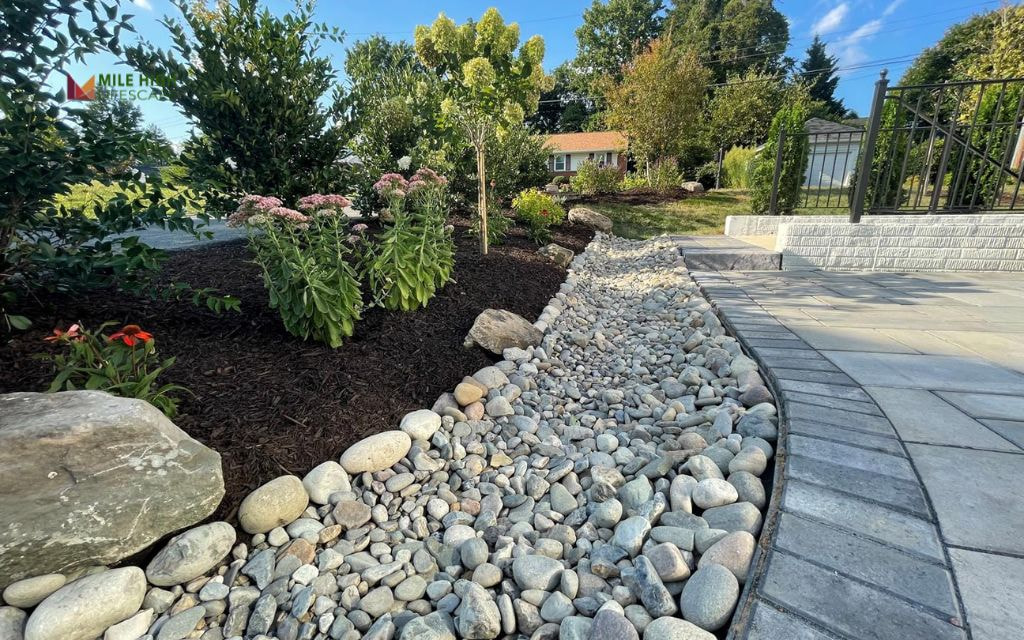
#5: Layered Entry Bed with Structural Elements
Design a welcoming entrance using height variation: Rabbitbrush in the background, Salvia in the middle, and Creeping Veronica in the foreground. This arrangement creates natural depth while providing year-round interest through seasonal blooms and textural contrast.
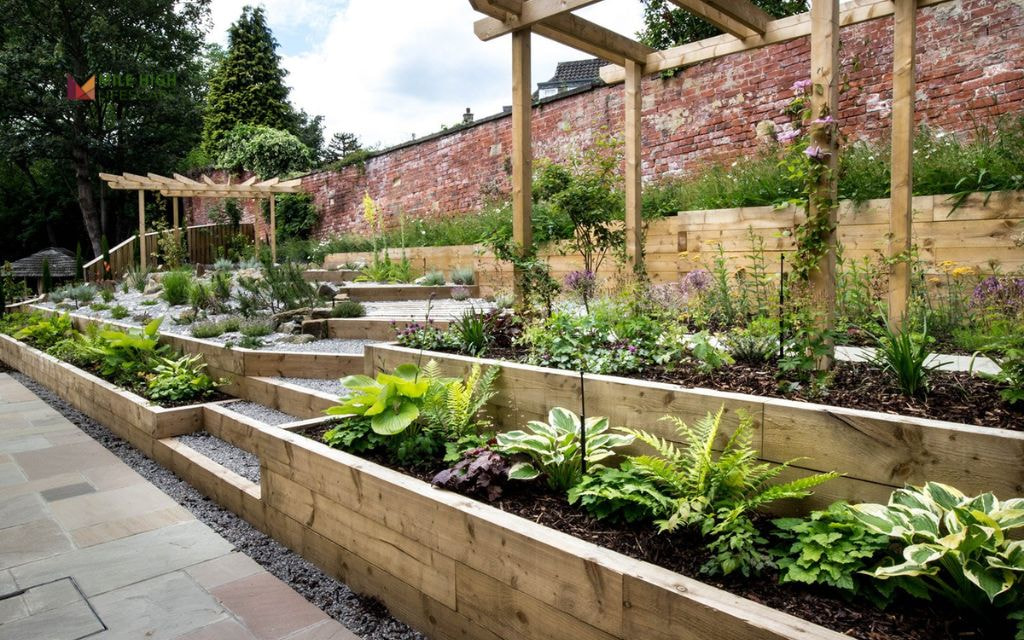
#6: No-Lawn Front Yard with Mulch Base
Replace your entire lawn with a mulch foundation complemented by stone-edged raised beds. Fill these areas with native perennials and ornamental grasses. The mulch minimizes evaporation while steel edging provides clean, modern definition. This approach eliminates irrigation needs for most of your front yard.
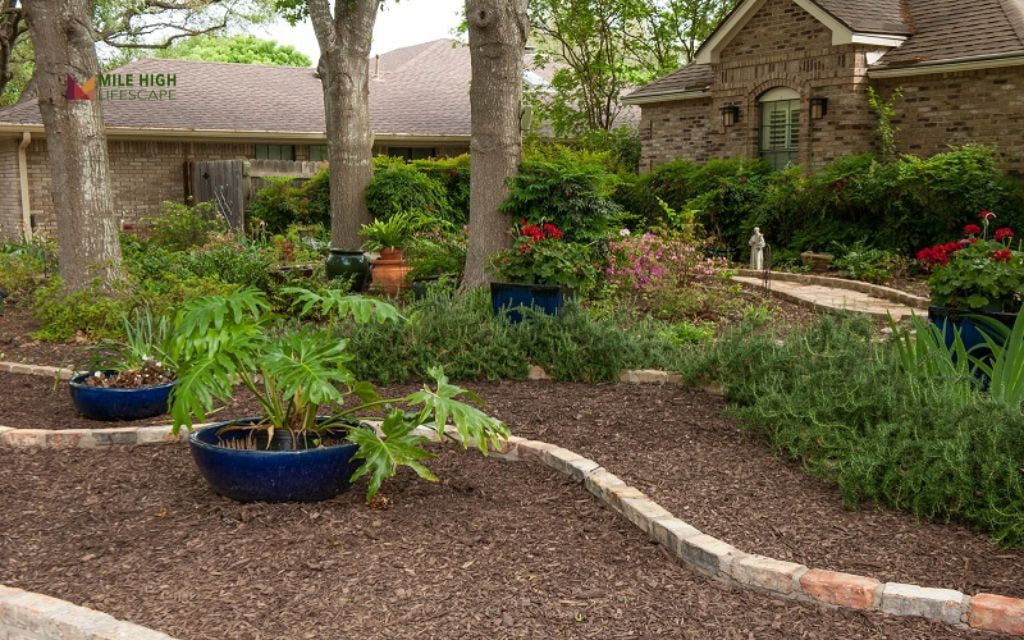
#7: Flagpole Circle Garden with Structural Plants
Transform tree wells or pole areas into focal points using architectural plants like Agastache and Yucca. Arrange in groups of three for visual balance and drought resilience. This design draws attention to existing landscape features while reducing maintenance requirements.
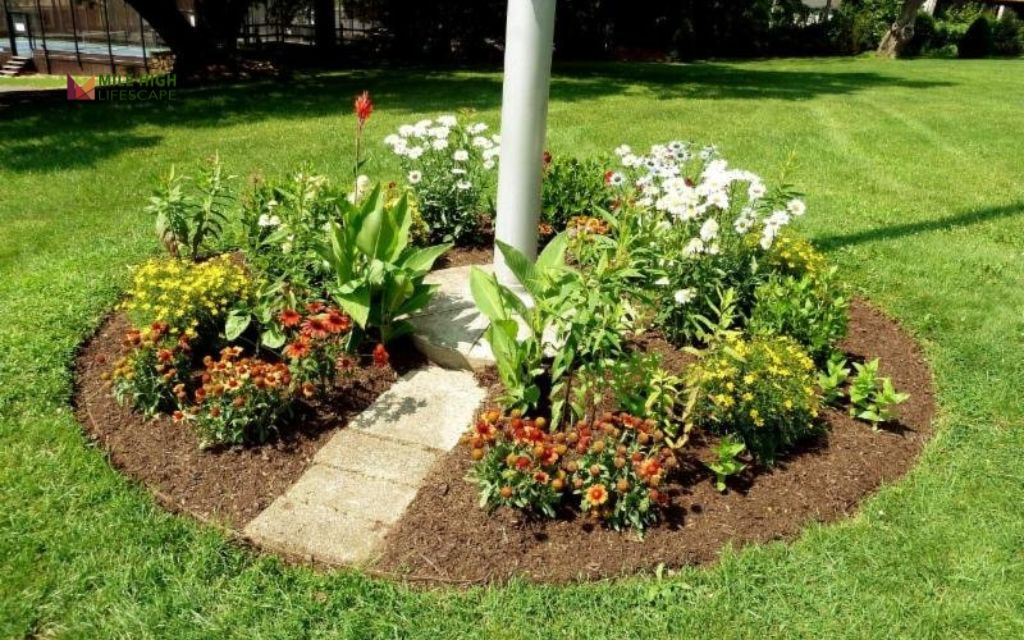
#8: Sloped Corner Berm with Prairie Plants
Build elevated soil on corner areas to create dimension and visual interest. Plant native species like Coneflower, Gaillardia, and Little Bluestem. This technique reduces erosion on sloped sections while enhancing street visibility with vertical elements that require minimal watering.
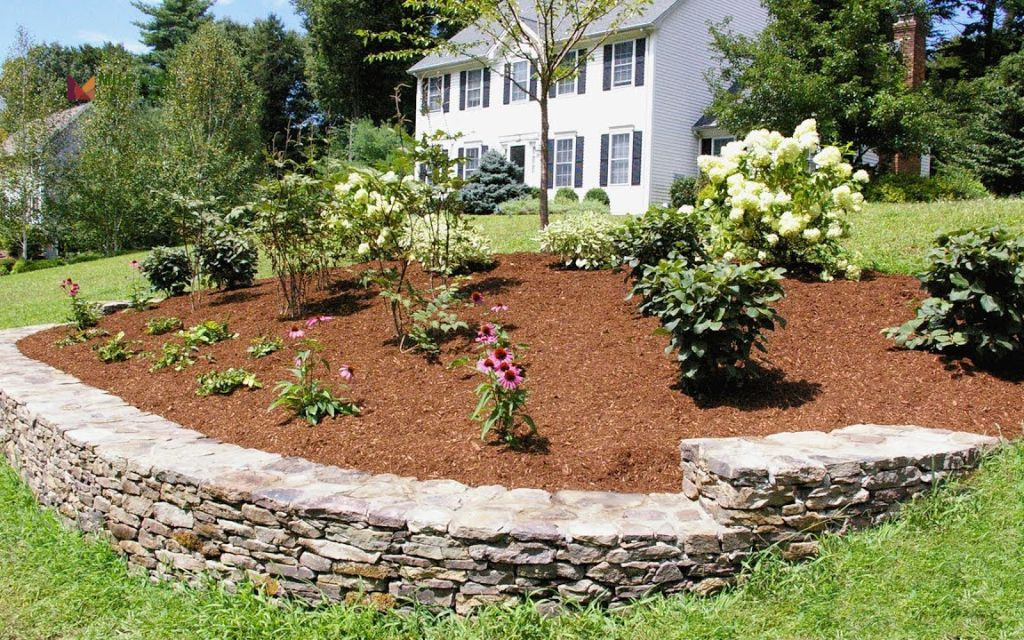
#9: Mixed Shrub Buffer for Fence Lines
Plant Mahonia, Serviceberry, and Sand Cherry along property boundaries to establish privacy screening that thrives in Colorado conditions. Space plants according to mature growth expectations and apply gravel or bark mulch to retain moisture. This border solution creates habitat while defining property lines.
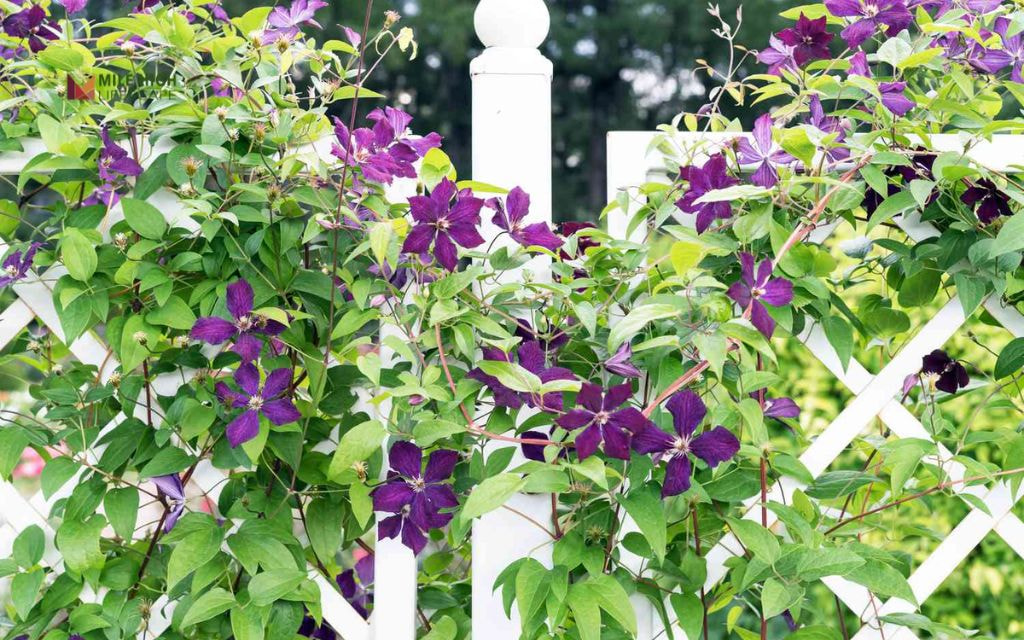
#10: Stone Garden with Seasonal Anchors
Arrange decorative granite or basalt rocks interspersed with seasonal flowering plants like Catmint, Lavender, and Evening Primrose. This minimalist approach works well with modern architecture while drastically reducing water requirements compared to traditional landscaping.
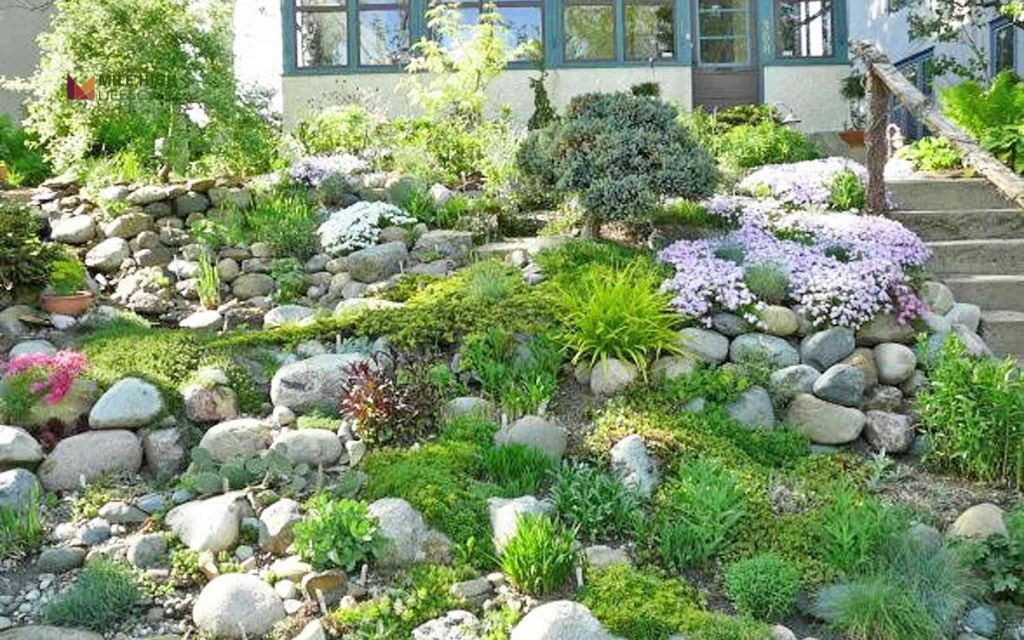
Backyard Xeriscape Ideas
#11: Gravel Patio with Shade Integration
Create a maintenance-free outdoor living space using decomposed granite or pea gravel. Frame with bushy native plants like Apache Plume for natural privacy screens. Incorporate a strategic shade tree or umbrella for afternoon relief from Denver’s intense sun while maintaining water-wise principles.
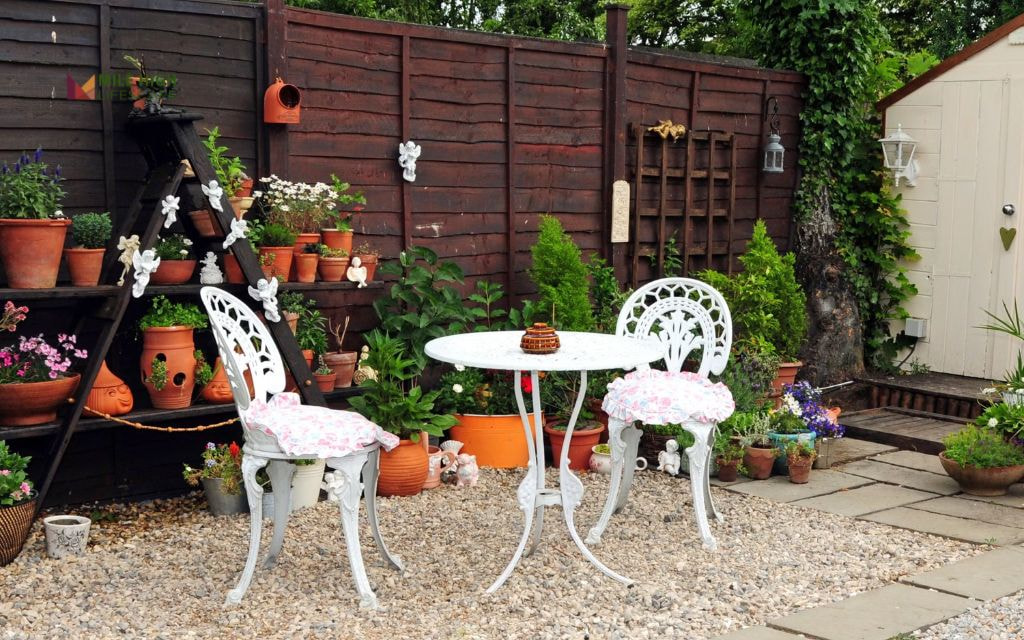
#12: Play-Ready Drought-Resistant Turf Zone
Install RTF Fescue or Hybrid Bluegrass blends in designated play zone or a dog friendly xeriscape backyard for active pets. These varieties require 30-50% less water than conventional turf while maintaining durability for activity. Frame with mulch paths and planted borders to contain irrigation needs to specific zones.
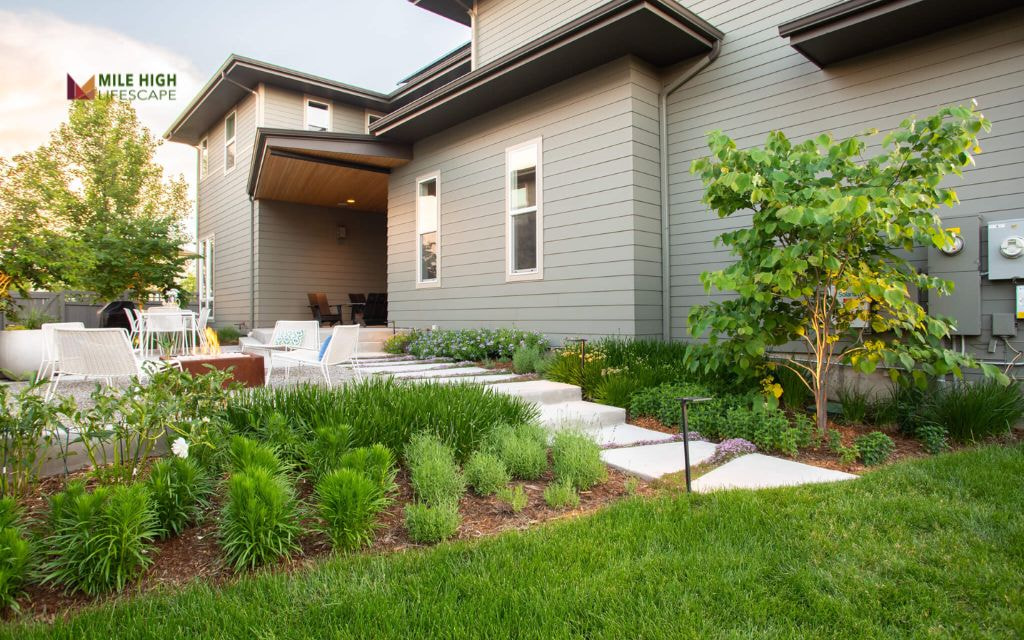
#13: Edible Xeriscape with Herb Integration
Combine water-wise herbs like Rosemary, Sage, and Lavender with compact vegetables in raised beds. Use brick or stone edging for definition and install drip irrigation for targeted watering. This approach produces food while adhering to xeriscaping principles.
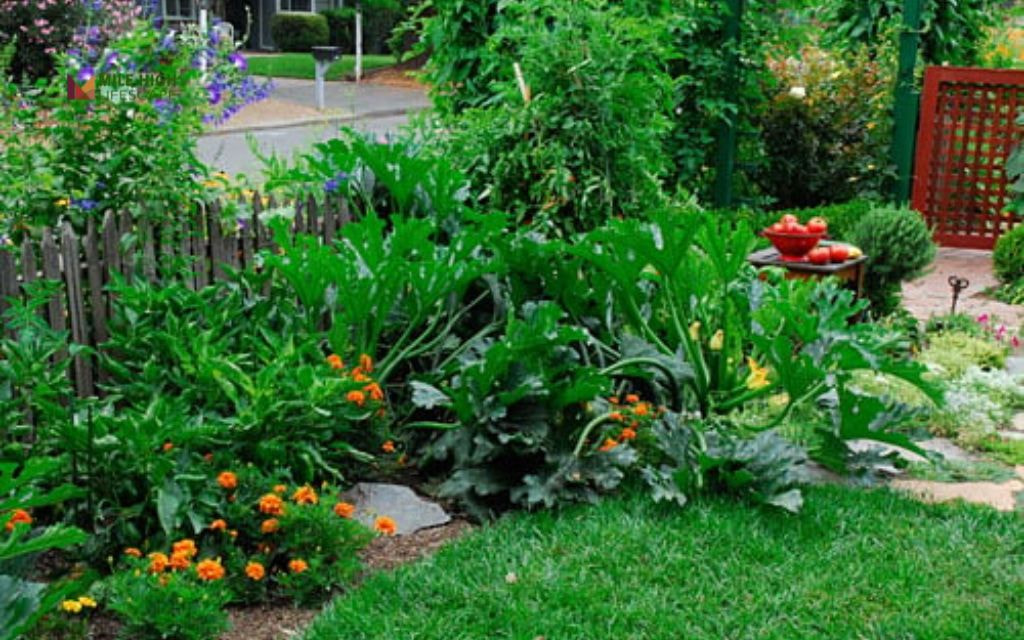
#14: Fire Pit Garden with Rock Mulch
Develop a gathering space with a circular patio or crushed rock base surrounding a fire feature. Incorporate seating walls and frame with clump grasses and hardy succulents. The rock base eliminates water needs while creating a functional outdoor room for Denver’s mild evenings.
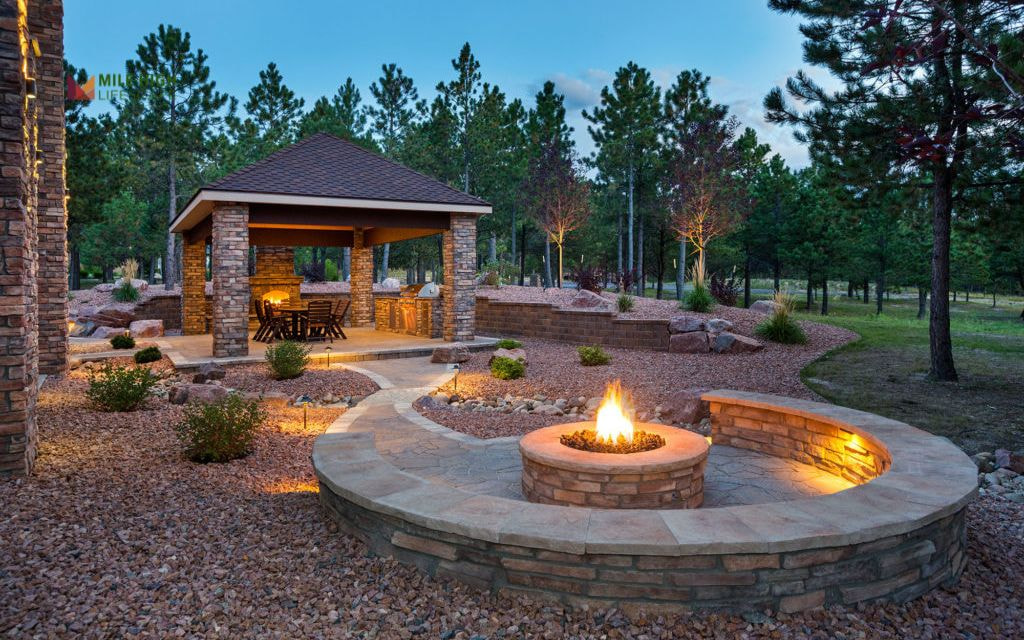
#15: Rain Garden with Native Wildflowers
Construct a shallow basin at your yard’s low point to capture roof runoff. Plant Penstemon, Bee Balm, and Goldenrod that tolerate both wet and dry conditions. This system harnesses natural precipitation patterns while creating habitat.
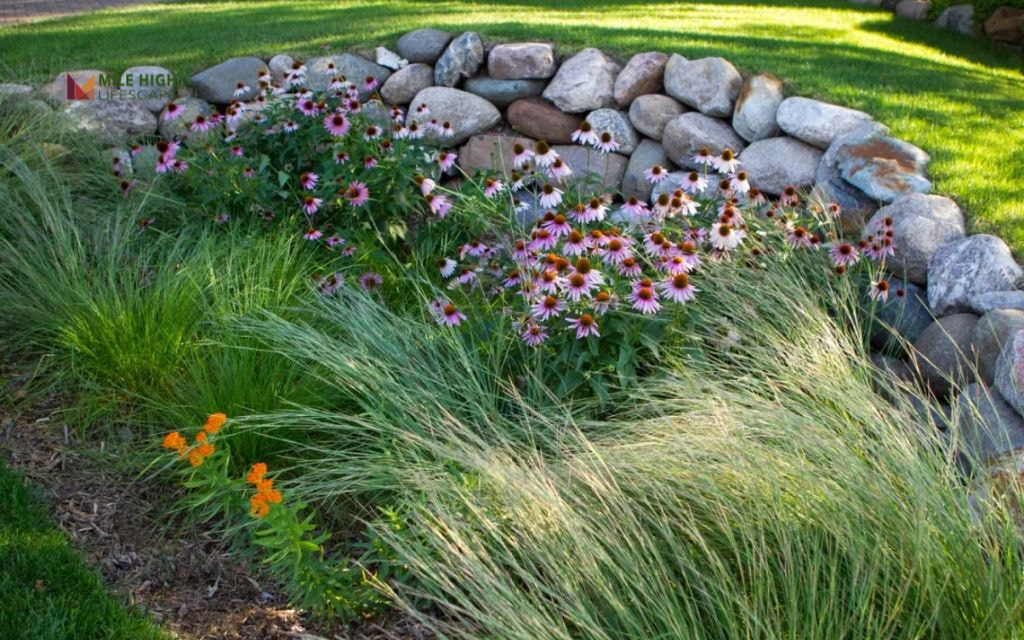
#16: Hammock Nook with Groundcover
Establish a relaxation zone under trees or shade sails using Creeping Oregon Grape and Fernbush as foundation plants. Combine soft mulch surfaces with boulder anchors for hammock installation. This creates a low-water retreat that maximizes existing shade resources.

#17: Backyard Wildlife Zone
Develop habitat using nectar-rich plants like Milkweed, Coneflower, and Rocky Mountain Penstemon. Incorporate birdbaths or bee houses to attract beneficial insects and birds. This ecosystem approach supports local wildlife while requiring minimal supplemental water once established.
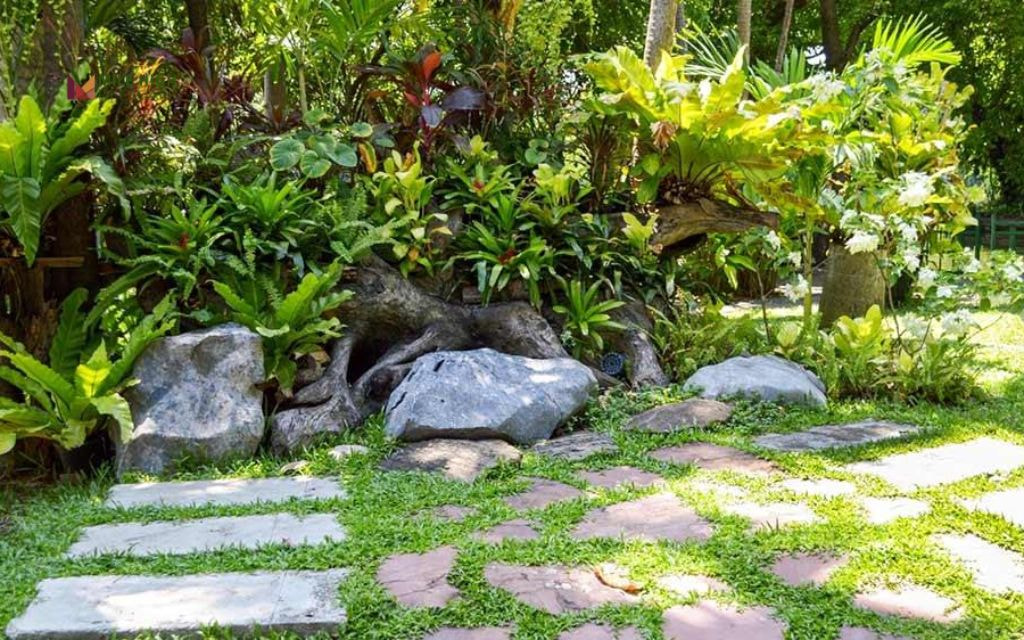
#18: Flagstone Dining Area with Native Border
Install natural stone flooring for outdoor dining surrounded by drought-adapted perennials. Add potted succulents as table centerpieces. This entertainment space combines practicality with water conservation through permeable surfaces and strategic plant selection.
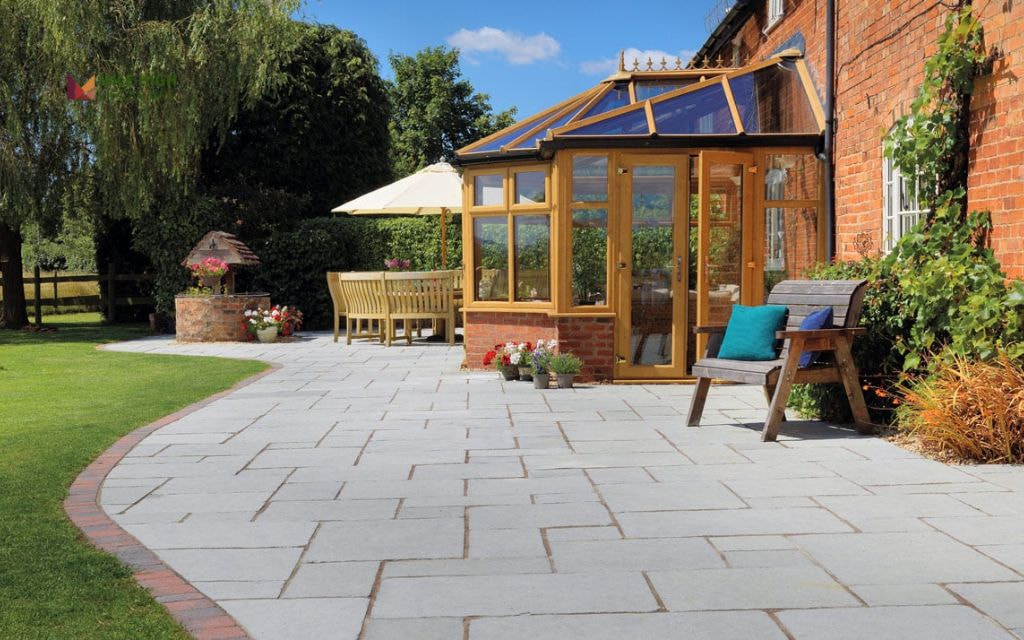
#19: Zen Corner with Raked Gravel
Design a contemplative space using fine granite with vertical accents like Red Yucca and New Mexico Privet. Include focal boulders or lanterns for visual interest. This meditation zone requires virtually no irrigation while providing year-round structure.
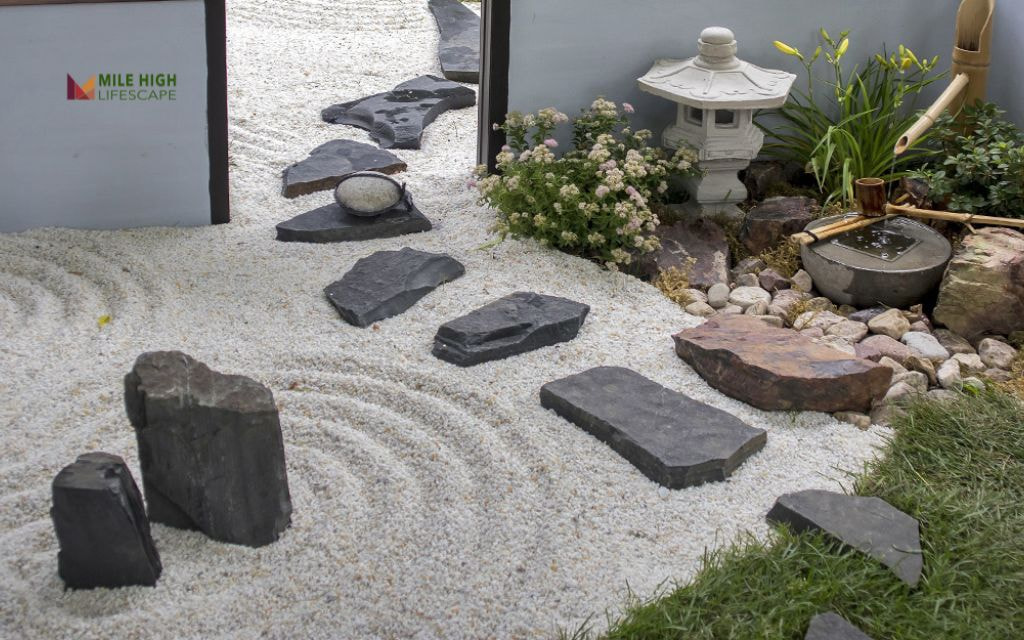
#20: Meadow-Style Back Border
Plant low-seed native grass and wildflower blends along property boundaries. This approach requires annual mowing only and works with both modern and rustic home styles. The deep root systems access groundwater without supplemental irrigation once established.
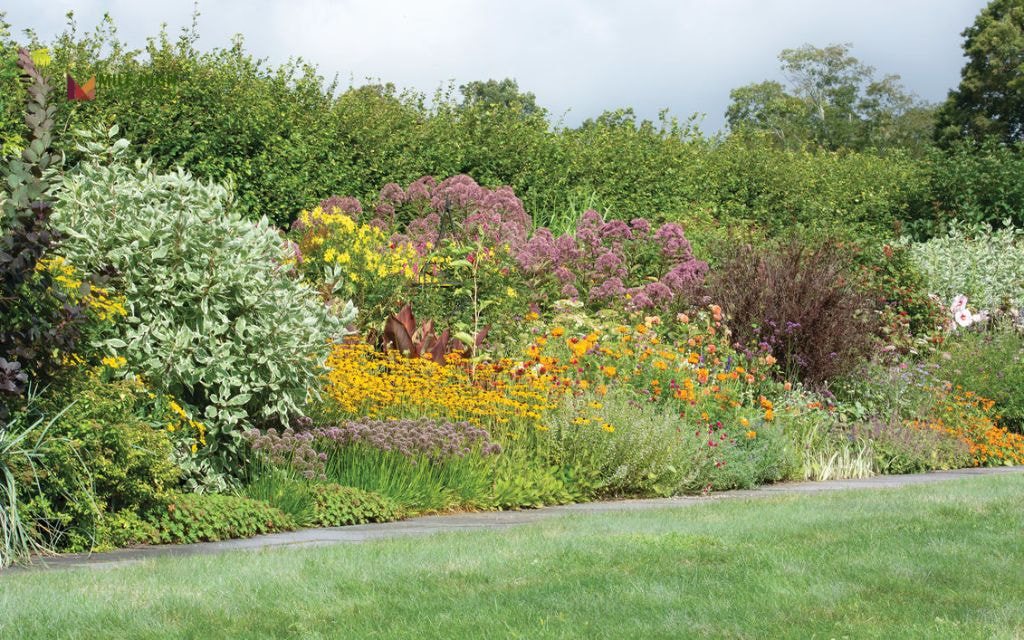
Small Yard & Simple Xeriscape Ideas
#21: Corner Triangle Bed with Structural Elements
Optimize entry corners and fence edges with compact arrangements of Dwarf Mugo Pine, Autumn Joy Sedum, and Creeping Thyme. Use decorative rock and steel edging for definition. This targeted approach transforms problematic small spaces into low-maintenance focal points.
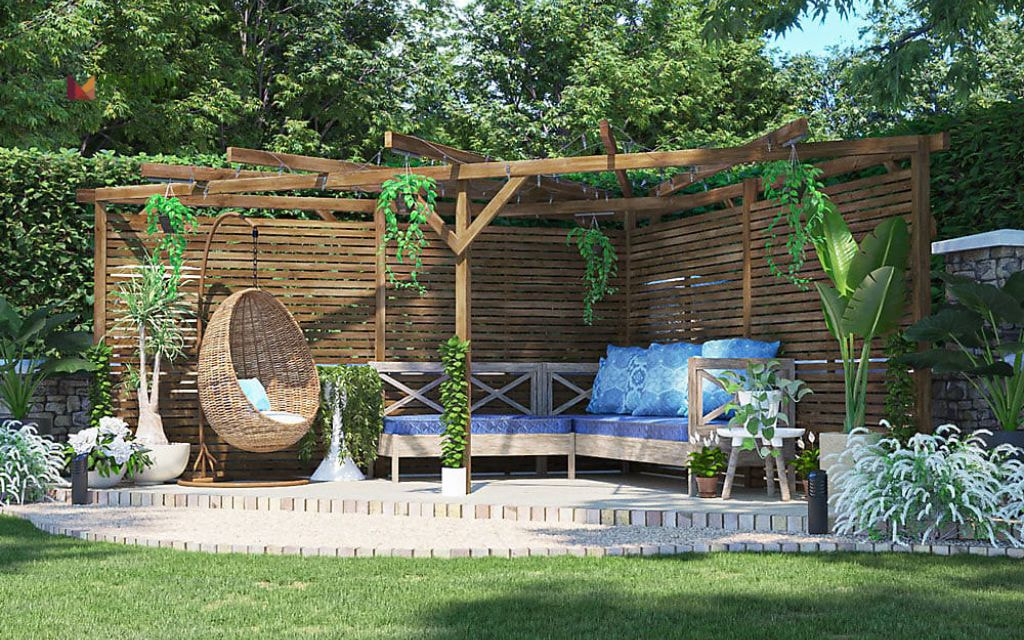
#22: Mailbox Garden with Pollinator Mix
Replace grass surrounding mailboxes with drought-adapted blooms like Black-eyed Susan, Purple Coneflower, and Coreopsis. This entry-level xeriscaping project introduces basic principles while immediately reducing water usage in a highly visible location.

#23: Side Yard Strip with Stepping Stones
Transform narrow passages with mulch pathways flanked by compact succulents like Hens & Chicks and Creeping Jenny. This solution converts utility spaces into visually appealing transitions while eliminating irrigation needs in often-neglected areas.
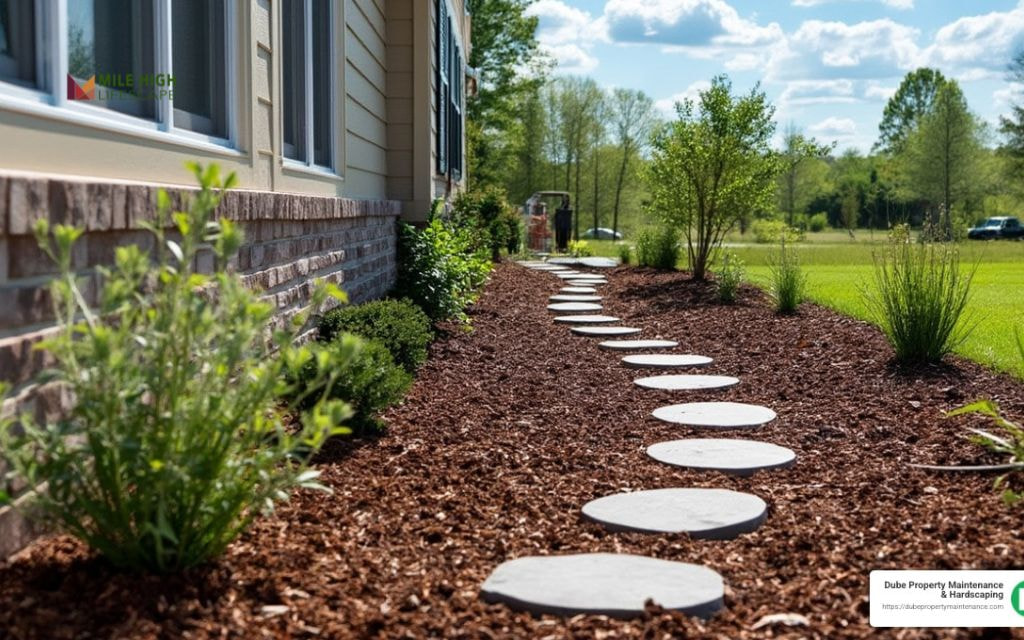
#24: Minimalist Container Cluster
Group 3-5 ceramic or concrete pots over gravel beds planted with Lavender, Blue Fescue, and Agave. Connect to drip irrigation for simplified watering. This approach works well for small spaces, rental properties, or as an introduction to xeriscaping principles.
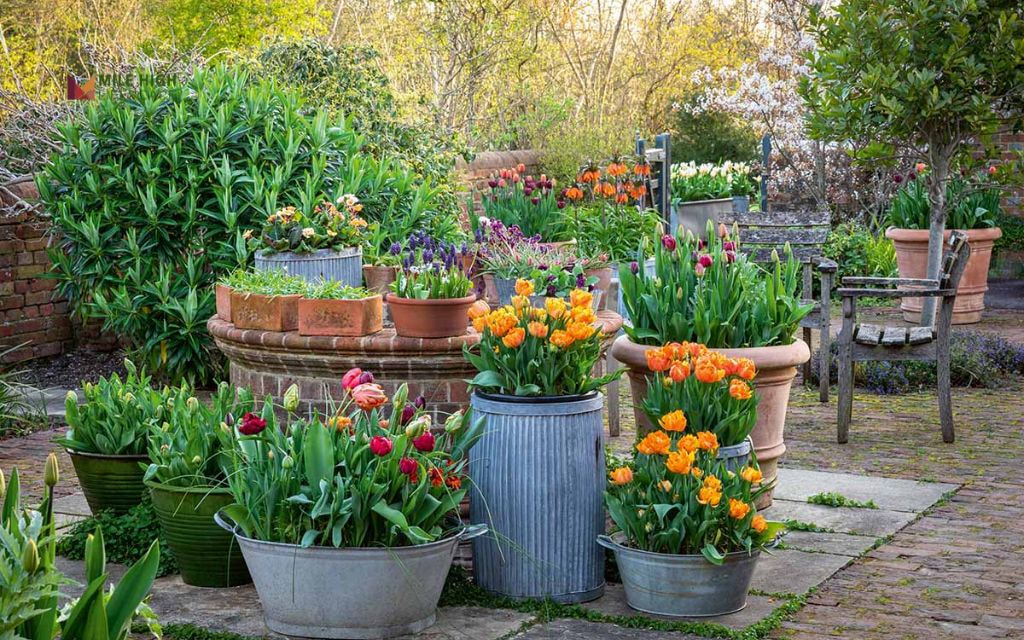
#25: Urban Strip Conversion
Transform the often-challenging area between sidewalk and street using tough, low-profile plants like Prairie Zinnia, Ice Plant, and Yarrow. Add flagstones for access points. This high-visibility project dramatically reduces water usage in typically wasteful municipal zones.
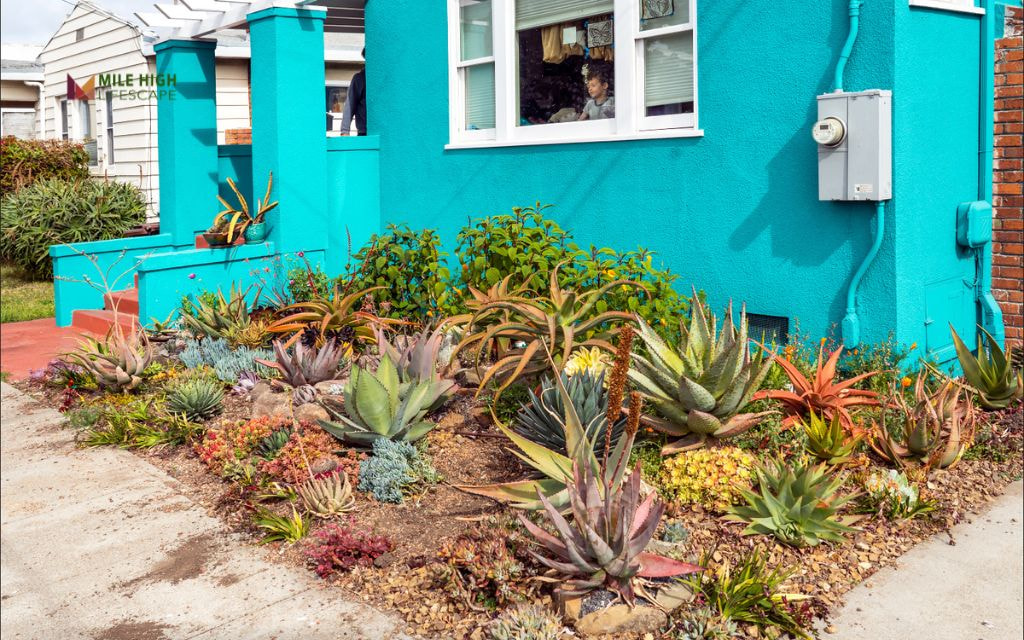
#26: Vertical Wall Planter with Herbs
Mount modular planters on fences or walls containing Oregano, Sage, Thyme, and Chives. This space-saving solution works well for patios and balconies while providing culinary herbs that naturally thrive in Colorado’s dry conditions.

#27: Half-Moon Garden Around Tree Base
Create crescent-shaped beds beneath mature trees using shade-tolerant, low-water plants like Oregon Grape, Columbine, and Heuchera. Cover with organic mulch to retain moisture. This approach protects tree roots while eliminating difficult-to-irrigate turf zones.
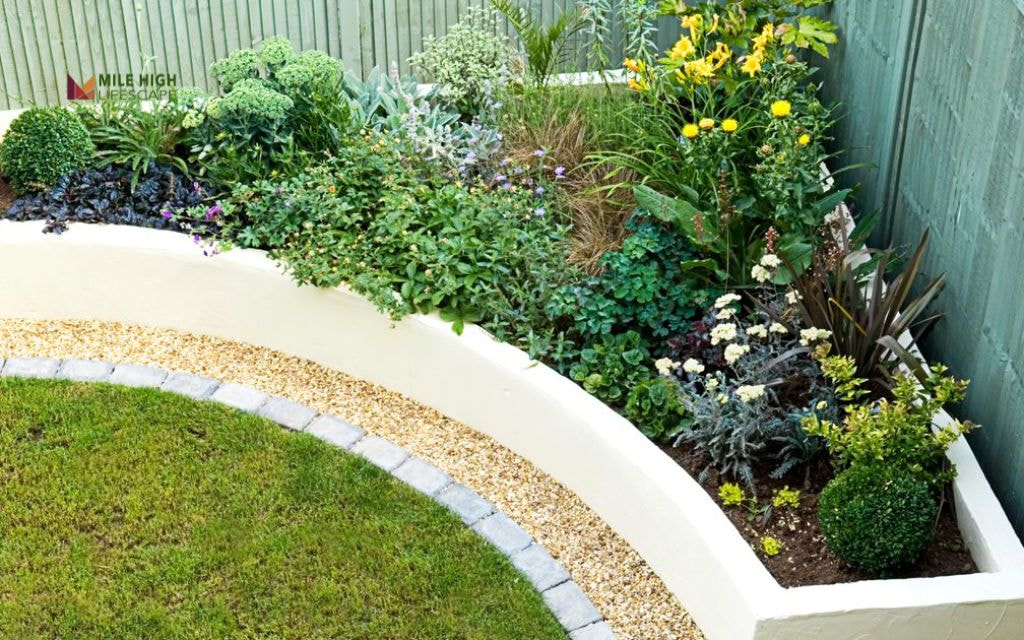
#28: Rock Garden Container for Patios
Develop wide, shallow containers with specialized cactus soil planted with Red Yucca, Hen & Chicks, and Sedum. This miniature xeriscape brings drought-resistant principles to decks and patios with minimal space requirements.
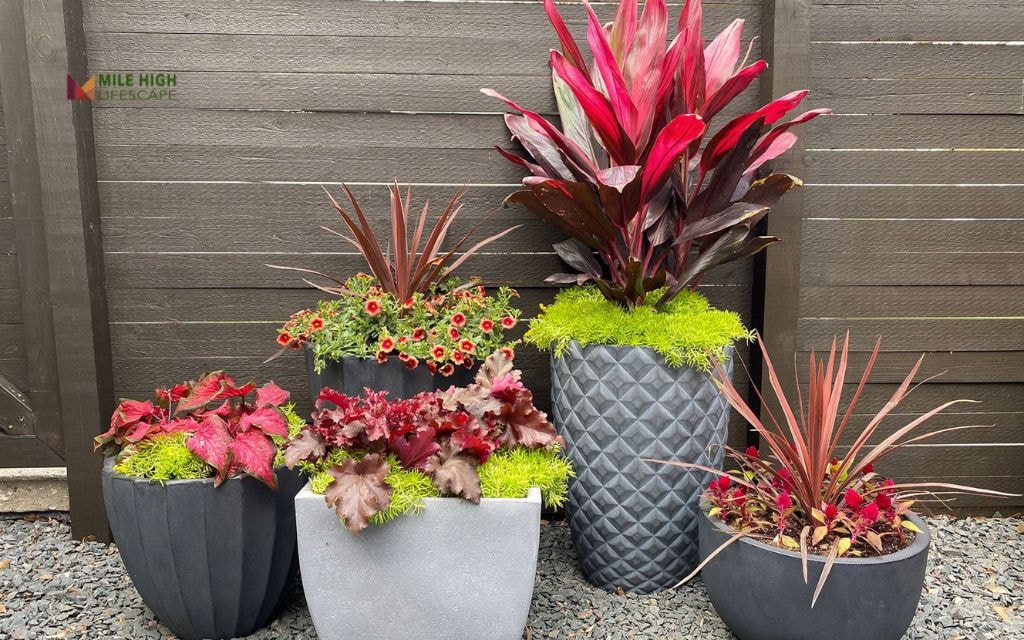
#29: Modern Grid Patio with Groundcover
Install square pavers with 2-4 inch spacing filled with Creeping Thyme or Elfin Clover. This contemporary design creates permeable surfaces that allow water penetration while maintaining functional outdoor living space in compact yards.
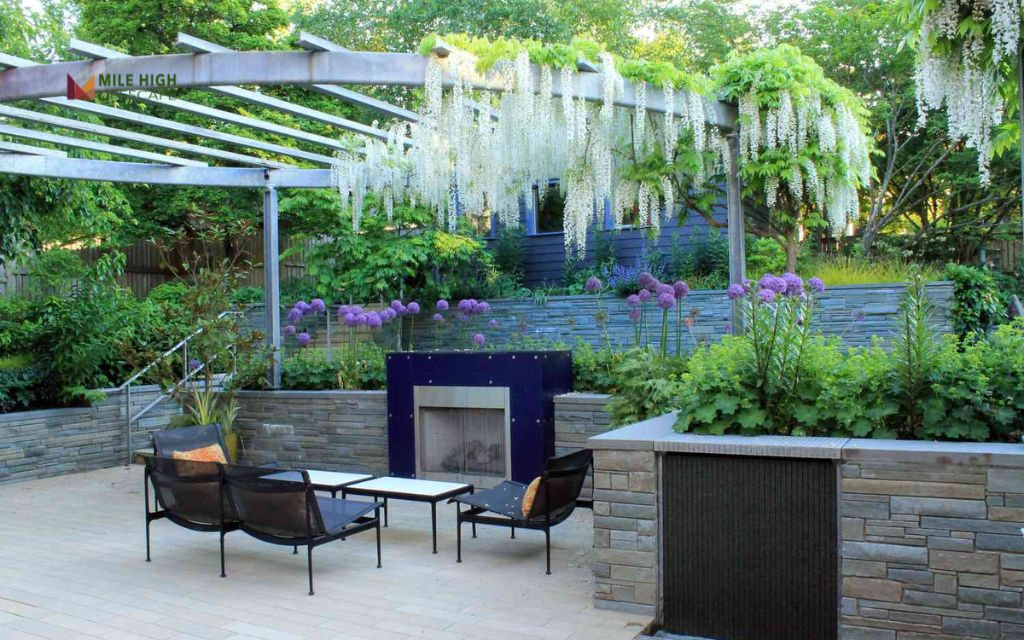
#30: Meditation Circle with Native Plants
Define a 6-8 foot diameter circle with mulch foundation, one focal boulder, and 3-4 native perennials like Gaillardia and Penstemon. This simple design creates a dedicated reflection space with minimal water requirements and maintenance needs.
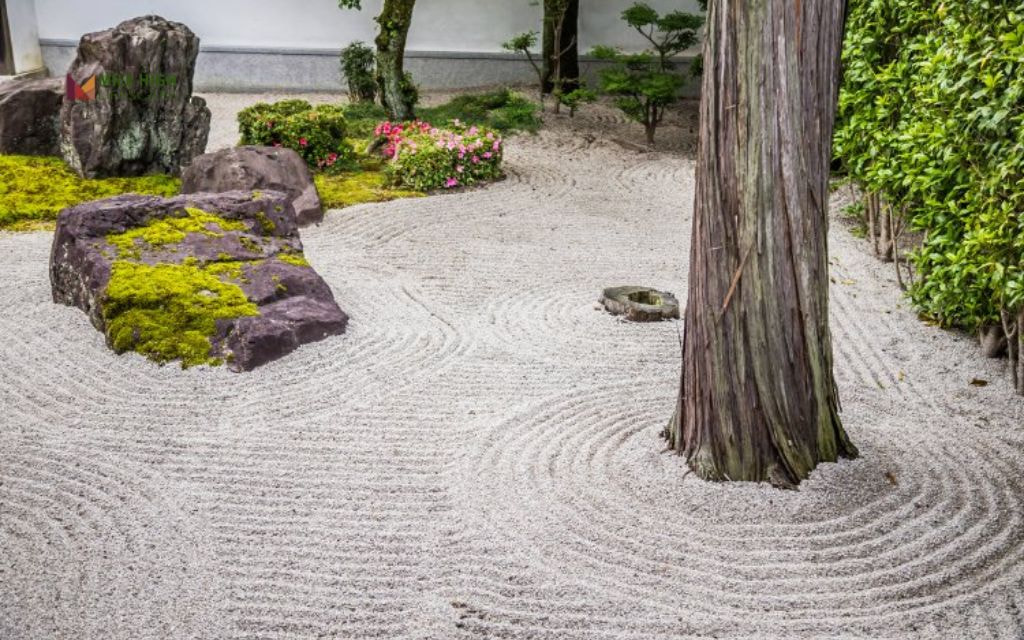
Conclusion
Xeriscaping represents a practical approach to Colorado landscaping that balances beauty, functionality, and conservation. The ideas presented offer starting points for properties of any size or style. If you’re ready to get started, you can read this guide about how to xeriscape in Colorado and just start small with a single bed or zone to build confidence and experience over time.
At Mile High Lifescape, we’ve implemented these techniques throughout Denver for nearly two decades. Our xeriscape landscaper near Denver helps homeowners reduce water bills while creating stunning outdoor spaces adapted specifically to Colorado’s climate challenges.
Contact us for a consultation to develop custom xeriscape designs that align with your property’s unique characteristics and your personal design preferences.
Bring sustainable beauty to your Denver property with our Xeriscaping Landscaping Services — schedule your complimentary consultation today.
Frequently Asked Questions (FAQs)
Can I xeriscape without removing all my grass?
Yes, you can xeriscape without removing all your grass. Xeriscaping focuses on water conservation through strategic plant selection and efficient irrigation practices. Consider converting high-water-use sections of lawn while maintaining drought-resistant turf in functional areas for recreation or pets.
How much space do I need to start a xeriscape project?
You don’t need a large area to start a xeriscape project. Even small spaces like mailbox surrounds, tree wells, or narrow side yards provide perfect opportunities to implement water-wise principles. Many homeowners begin with container arrangements before expanding to larger landscape sections.
Will xeriscaping work in partial shade or full sun?
Yes, xeriscaping works effectively in both partial shade and full sun conditions. The key lies in selecting appropriate plants for your specific light conditions. For shade areas, consider Oregon Grape, Columbine, and Coral Bells. For full sun, options expand to include Russian Sage, Yarrow, and most native grasses.
What are the best-looking drought-resistant plants for front yards?
For visually impressive drought-tolerant front yards, incorporate Lavender, Yarrow, Purple Coneflower, Agave, Yucca, and ornamental grasses like Blue Avena. These plants deliver varied textures, colors, and flowering periods while requiring minimal irrigation once established.
How do I maintain a xeriscape through Colorado winters?
To maintain xeriscapes through Colorado winters, apply mulch in late fall to insulate root systems. Provide occasional winter watering during dry periods when temperatures exceed 40°F. Select plants rated for our climate zone (5-6) to ensure cold hardiness. Most properly designed xeriscapes actually require less winter maintenance than conventional landscapes.
